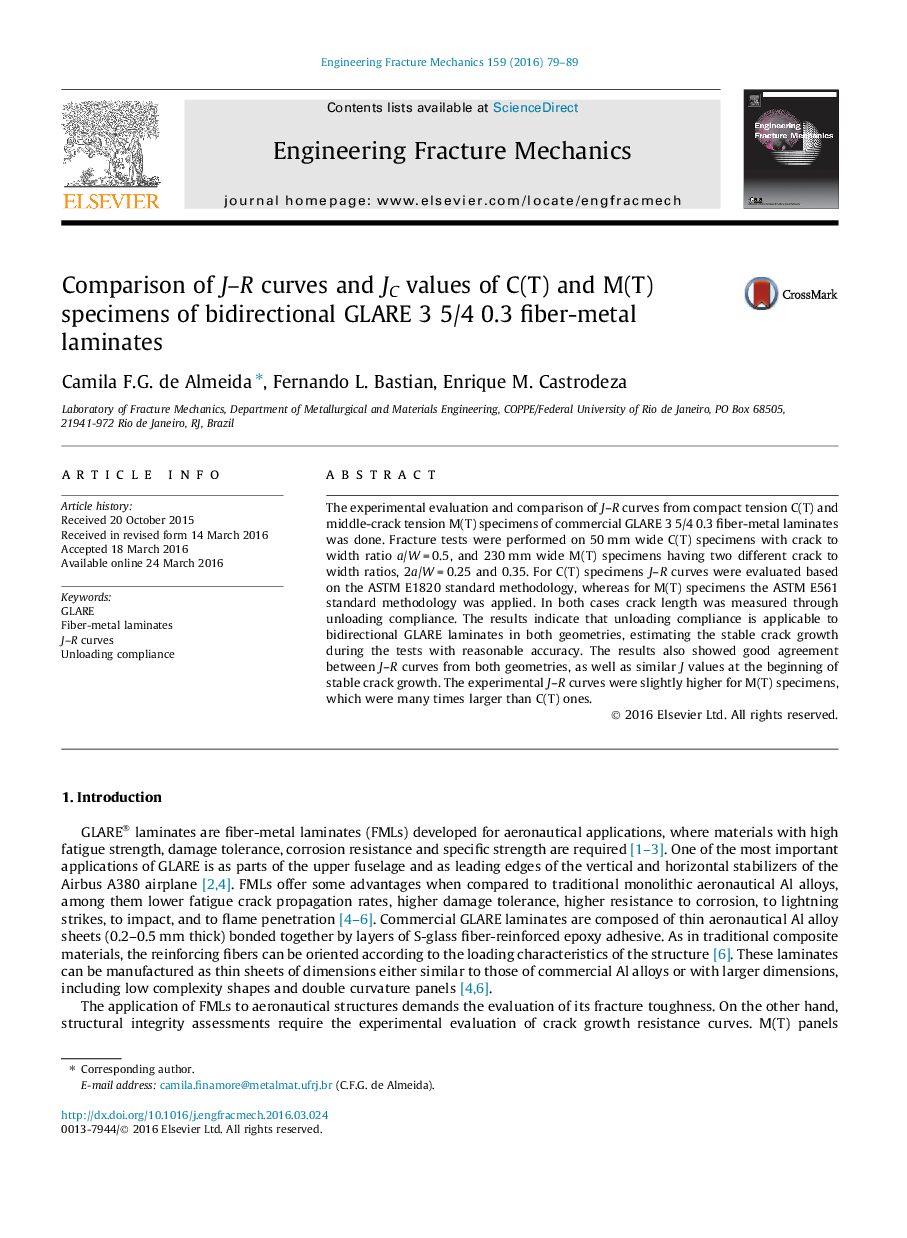| Article ID | Journal | Published Year | Pages | File Type |
|---|---|---|---|---|
| 770340 | Engineering Fracture Mechanics | 2016 | 11 Pages |
•J–R curves from C(T) and M(T) specimens of GLARE 3 were evaluated and compared.•J–R curves were evaluated optically and through elastic compliance.•The results showed good agreement between J–R curves from both geometries.
The experimental evaluation and comparison of J–R curves from compact tension C(T) and middle-crack tension M(T) specimens of commercial GLARE 3 5/4 0.3 fiber-metal laminates was done. Fracture tests were performed on 50 mm wide C(T) specimens with crack to width ratio a/W = 0.5, and 230 mm wide M(T) specimens having two different crack to width ratios, 2a/W = 0.25 and 0.35. For C(T) specimens J–R curves were evaluated based on the ASTM E1820 standard methodology, whereas for M(T) specimens the ASTM E561 standard methodology was applied. In both cases crack length was measured through unloading compliance. The results indicate that unloading compliance is applicable to bidirectional GLARE laminates in both geometries, estimating the stable crack growth during the tests with reasonable accuracy. The results also showed good agreement between J–R curves from both geometries, as well as similar J values at the beginning of stable crack growth. The experimental J–R curves were slightly higher for M(T) specimens, which were many times larger than C(T) ones.
